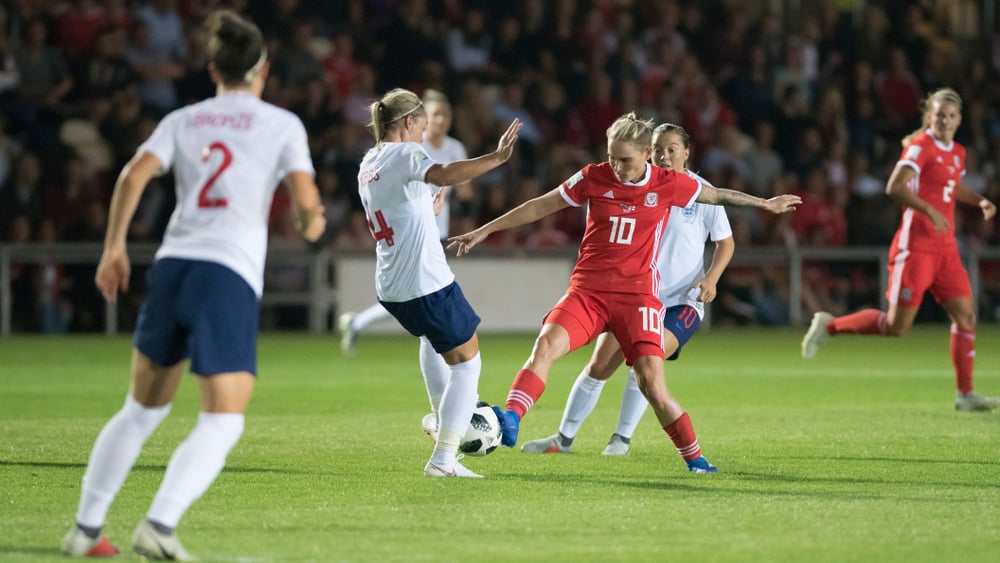However long overdue it may be, the world of women’s football has experienced some unprecedented growth in recent years.
Increased global exposure for the sport, along with the constant battle against gender discrimination gradually gaining strength, means that women’s football is ready to take centre stage in France for this summer’s World Cup tournament.
In England, they are now nearing the end of the first ever Women’s Super League (WSL) season. Arsenal an Manchester City are battling it out for the league title in the competition’s first ever all professional setup. There are 11 full-time WSL teams in this first league season while Manchester United’s women’s team, which is in the second-tier ‘Championship’ is also made up of full-time professional players.
The relative success of the England women’s national team, reaching the semi-finals of both the last World Cup and the European Championships, has helped to remove the unfair stigma that once surrounded the subject of women playing the beautiful game.
The women’s FA Cup final was only moved to the country’s principal venue in 2015. Between 2015 and 2017 the attendance was over 30,000 for each final with 2018’s final blowing all previous records out of the water thanks to over 45,000 fans making themselves heard as Chelsea beat Arsenal in a thrilling game.
Exciting times on and off the pitch have also started that ever-important money wheel spinning. This change was clearly evident when it was announced in recent weeks that Barclays were putting their money behind the WSL.
The multi-million-pound deal is the biggest for women’s sports in the UK and will see the WSL become known as the Barclays WSL. Reportedly, the deal will be worth more than £10 million to the WSL over the next three seasons. It also means that, for the first time ever, prize money will be awarded to all WSL teams based on their finishing position within the league table.
Now, all three women’s competitions in the UK have official sponsors. SSE sponsor the FA Cup while Continental Tyre’s put their brand on the League Cup tournament.
Kelly Simmons, the FA’s Director of Women’s Football, spoke about the growing popularity of the WSL before the start of the season.
“I genuinely believe that women’s football can be the first female team sport to break through into the mainstream,” said Simmons. “What I mean by that is that there are a lot of women’s sports that have peaks of interest at the Olympics or major tournaments, but they then disappear.
“With the clubs we have and the investment that is taking place, we can be that breakthrough sport where the players are households names playing in front of larger crowds at sustainable clubs.”
Talking more specifically about what the upgrade to professional teams means for the game, Simmons said:
“This is a momentous moment for women’s football, the creation of an entirely professional Super League is probably the most significant change there has been since the WSL was launched in 2011. We have all the major clubs in England represented by a women’s team and if you look at Manchester United, they got more than 5,000 people watching their first game. With their huge fanbase, it’s a big positive they are part of it.”
The WSL had been posting average attendances of around 900 per game up until 2017. Simmons believes getting bums in seats is one sure way of growing the women’s game throughout the country.
“… we want to be more sustainable. The best way to do that is to grow attendances at club level. I don’t want to put a figure on it, but we would like average crowds to be up around the 2,000-mark by 2020. That is what we are working towards and I believe we will get there.”
On the European stage, Mastercard activated their sponsorship around the women’s Champions League final for the first time in June 2017.
Women’s football still has a long way to go but it’s certainly on the right track now. The more exposure the women’s game receives, the more lucrative the sponsorship deals they will be able to negotiate. Brands can view sponsorship in women’s football from a couple of perspectives. There is the obvious airing of a company’s name during all live broadcasts, post-match interviews, press conferences and competition names. However, it would be a hugely positive PR move for socially aware companies to show themselves to be ahead of the curve – nailing their flag to the pole in support of women’s rights and showing belief in the women’s game.
We spoke with BBC Sports Journalist Emma Sanders about the growth in women’s football plus the sponsorship opportunities arising because of this.
InsiderSport: Just how important has the England women’s team’s performances in the last two major finals been to the growth of the game within the UK?
Emma: It’s had a massive effect. Success on the international stage attracts new viewers on TV, new supporters to the Women’s Super League and increases participation figures. Recognising that success puts the women’s game on a higher platform. The success has also given the opportunity for players to receive sponsorship and for many teams and leagues (including WSL) to move into professionalism. This, in turn, improves the standard of the sport and therefore attracts new viewers. I wrote an in-depth article on this in October which looked at the statistics, with some help from the FA. (https://www.bbc.co.uk/sport/football/45288059)
In light of the recent Barclays deal to sponsor the WSL and the existing deals for the FA Cup and League Cup with SSE and Continental Tyres, do you feel the women’s game is becoming more appealing to brands looking to get their names out there in different ways?
It is becoming more appealing because the women’s game is growing at a rapid rate. These brands recognise that and realise with the World Cup on its way in the summer, there’s an opportunity for increased advertisement in the women’s game. There isn’t as much competition for brands compared to that in the men’s game so it’s a cost-effective way of reaching a new audience and they will no doubt benefit from that early interest in the long run when TV revenue increases.
Would you agree that women’s football currently presents a great opportunity for brands to display their social awareness and show their support for the women’s game by sponsoring a tournament or team in the UK?
It’s obviously very good for the women’s game that brands of these sizes and pedigree are showing an interest. It raises eyebrows and adds more credibility to the competitions the brands are supporting. Likewise, these companies reap the benefits too from a commercial point of view.
Has any marketing campaign within women’s football or relating to women’s football already caught your eye?
Nike has done several strong videos on social media pointing to women’s football and equality. They have a worldwide following so it’s great that they are able to show their support and promote the game.























